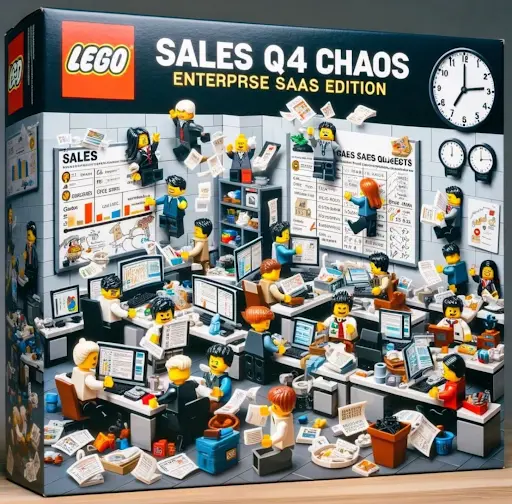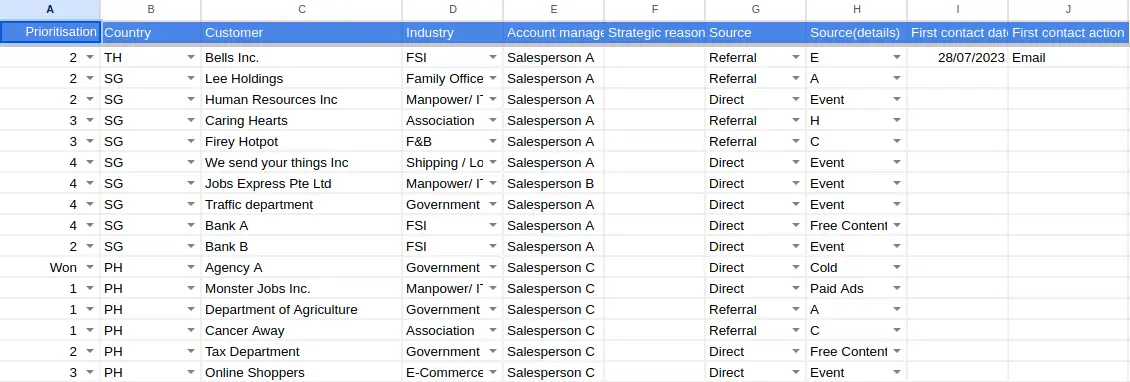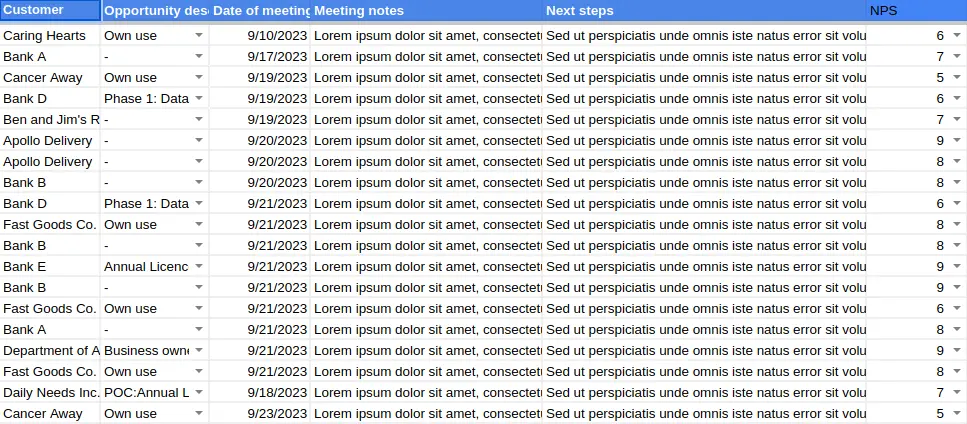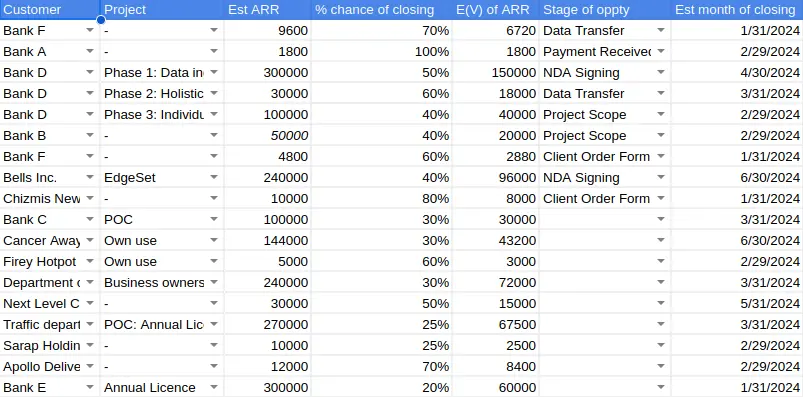How we created our own CRM with just EdgeSet and google sheets
No need to grapple with, and pay for, painful CRM/ ERP like Salesforce.
TLDR; for a small sales team of 1-5, EdgeSet and google sheets, works well as a CRM due to the flexibility and cost.

As a business owner and entrepreneur, Sales is always on the top of my mind. It’s the first thing I think about when I wake up, and the last thing I think about before I sleep. Naturally, I want to know the latest sales figures, the bottlenecks, the wins, and the losses, to better improve. And I believe this is the same for the majority, if not all, business owners.
However, I will be the first to admit that I had trouble keeping detailed sales records myself; and also getting Tetmon’s star sales teammates to fill up the company CRM, which is a common refrain when I speak to other business owners.
It is not due to the lack of resolve: I had personally tried salesforce, sugarCRM, Outreach.io; each time, it’s like signing up for gym membership as one’s New Year resolution: it always starts with huge amount of resolution and hope, and then… within a couple of weeks, things slip before the resolution dying a quiet death.
For one sales CRM, it will be the pain to keep repeatedly adding the same names to Accounts, Contacts, Leads and Opportunities; for another, it will be the need to put in details (e.g full name, title, company name, address, office number, mobile number, email address) per contact that I don’t have, and instinctively know, are not relevant. The unwieldy-ness of changing expected chance of closing, expected revenue, and expected close-date by clicking through Opportunities one-by-one, right before our weekly sales meeting, also always gets to me - without this, the monthly sales visual dashboards become meaningless, very fast.
Sales has changed, but our CRM tools have not evolved. “It’s frustrating to grapple with CRM, I just want to do sales!” were my exact words to my co-founder. One VP of sales with 100 salespersons also shared with me that try as they might, they couldn’t get their salespeople to take the time to learn Salesforce, Hubspot, or any other CRM of the company’s choice, and the salespeople will only submit their sales records via Excel, however much cajoling is done.
The issue appears not to be with CRM, but with ERP in general. ERP is necessary for it adds structure to data, but its inflexibility is infuriating. That’s when EdgeSet can enter: EdgeSet marries the structure of ERP, with the flexibility of spreadsheets.
As leads started to come in after EdgeSet’s re-launch, I started to look around for a CRM system again. I thought: why not dog-food our own product, by trying to create our own CRM using EdgeSet, and see if it actually works?
As the idea took hold, we wrote out the information that we want to see in our CRM over one afternoon, followed up with a couple of in-person sessions to refine it, and the first cut of our own CRM is:
 Weekly
sales demo (sample)
Weekly
sales demo (sample)
 Prospect
list (sample)
Prospect
list (sample)
 Sales
meeting notes (sample)
Sales
meeting notes (sample)
 Sales
pipeline (sample)
Sales
pipeline (sample)
We were so overjoyed with the first iteration that we continuously added things that we want to see to it, including ageing:
 Expected
revenues by month of closing
Expected
revenues by month of closing
It makes for easier communication internally within our startup during our weekly standups, and also for external communications by just taking screenshots.
Advantages
- Use your google sheets and Excels as if they were SQL databases, not
only for this, but also to digitally transform your whole
business.
- Fast to setup (less than one hour) and real-time display of the sales pipeline.
- Customised to your needs.
- Available anywhere I travel, right after meetings (as it’s google sheets).
- Simple to maintain
- Just update the meeting notes on a daily basis.
- Easy to change expected deal value for all opportunities at one 5 minutes session, weekly, just before the weekly sales meeting, instead of having to go into every opportunity to change it one-by-one.
- Ability to join this CRM with other data sources e.g. marketing funnels, advertising reports, easily, just by adding the data source into EdgeSet within a minute.
- These means myself and the sales team have more time to do sales!
- Security and privacy
- On-premise or desktop version: no one but you (not even us) sees your valuable data.
Disadvantage
You may get criticised or laughed at for not having a proper CRM, but hey, a simple exercise routine of 10 minutes a day that you can keep to, beats a fancy personal-trainer crafted routine that you end up lapsing on. And, once you show your actual sales numbers, criticism melts away, and morphs into respect.
Conclusion
One may think that buying a sales CRM tool or ERP system is a part of your business “growing up”, but from our direct experience with sales organizations with 100+ salespeople, people naturally fall back to using spreadsheets, exporting data in CSVs, and doing analysis from there. EdgeSet allows your sales numbers to actually speak for themselves, not some fancy CRM software.
EdgeSet is a data integration tool that creates a database out of your myriad data sources and spreadsheets, with this sales CRM just being one of the use cases.